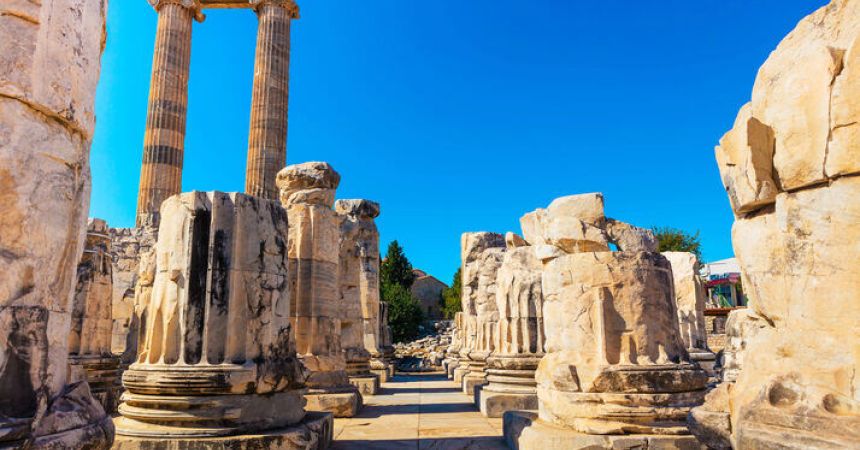
Is Turkey in Europe or Asia? Complete Travel & History Guide
Turkey is one of the world’s most fascinating countries — a place where ancient history meets modern life, and where East literally meets West. Geographically, politically, and culturally, Turkey occupies a unique position that often leads people to ask the question: Is Turkey in Europe or Asia?
The answer is not as straightforward as you might think. Turkey is a transcontinental country, meaning it spans two continents. Most of its territory lies in Asia, but a small portion is in Europe. This division is not just a matter of geography — it influences Turkey’s culture, politics, economy, and tourism in profound ways.
In this detailed guide, we’ll explore:
- Turkey’s geographical location
- Its cultural identity and history
- How its location impacts politics and diplomacy
- What this means for tourism and travel planning
Turkey’s Geographical Location
A Transcontinental Nation
Turkey’s landmass covers around 783,000 square kilometers (302,000 square miles). Out of this, about 97% lies in Asia, in the region known as Anatolia or Asia Minor. The remaining 3% lies in Europe, in a region called Eastern Thrace (also known as Turkish Thrace).
This makes Turkey one of the few countries in the world — along with Russia, Egypt, and Kazakhstan — to straddle more than one continent.
Natural Borders Between Europe and Asia
The boundary between the European and Asian parts of Turkey is defined by three key waterways:
- Bosphorus Strait – Runs through Istanbul, separating the European and Asian sides of the city.
- Sea of Marmara – Lies between the Bosphorus and the Dardanelles, entirely within Turkey’s borders.
- Dardanelles Strait – Connects the Sea of Marmara to the Aegean Sea, marking the westernmost boundary between the continents.
These waterways have been strategically important for centuries, serving as major trade and military routes.
Istanbul: The City on Two Continents
Istanbul is the only major city in the world situated on two continents. The European side contains most of the historic landmarks, government buildings, and commercial centers, while the Asian side is more residential, offering a quieter lifestyle.
Travelers can cross between continents multiple times a day via:
- Bosphorus bridges (15 July Martyrs Bridge, Fatih Sultan Mehmet Bridge, Yavuz Sultan Selim Bridge)
- Ferry services connecting both shores
- Marmaray rail tunnel running beneath the Bosphorus
For Istanbul’s residents, crossing from Europe to Asia (or vice versa) is as routine as commuting to work.
Turkey’s Cultural Identity
A Blend of East and West
Turkey’s location has shaped its culture into a fusion of European and Asian influences. This is reflected in:
- Architecture – European-style palaces like Dolmabahçe coexist with Ottoman mosques like the Blue Mosque.
- Cuisine – A mix of Mediterranean flavors and Middle Eastern spices.
- Lifestyle – Modern, Western-style urban life in cities like Istanbul and Ankara, alongside traditional customs in rural Anatolia.
Historical Background
Turkey’s dual identity is deeply rooted in its history:
Ancient Civilizations
Anatolia has been home to some of the world’s earliest and most influential civilizations — Hittites, Phrygians, Lydians, Greeks, Romans, and Byzantines.
The Ottoman Empire
From the late 13th century to the early 20th century, the Ottoman Empire controlled vast territories across Europe, Asia, and Africa. Istanbul (formerly Constantinople) was its capital and a major political and cultural hub.
The Modern Republic
In 1923, Mustafa Kemal Atatürk founded the Republic of Turkey, with its capital in Ankara. Atatürk introduced sweeping reforms aimed at modernization and aligning Turkey with Western institutions.

Is Turkey Politically European or Asian?
While most of Turkey’s land is in Asia, its political and economic ties connect it strongly to Europe:
- European Connections:
- Member of NATO since 1952.
- Customs union agreement with the European Union since 1995.
- Participation in European sports leagues (UEFA, EuroLeague).
- Asian Connections:
- Member of the Organization of Islamic Cooperation.
- Strong diplomatic and trade ties with Middle Eastern and Central Asian countries.
This dual affiliation allows Turkey to act as a bridge in diplomacy, facilitating dialogue between Eastern and Western nations.
The Impact on Tourism
Why the Location Matters
Turkey’s position across two continents makes it one of the world’s most diverse travel destinations. A visitor can experience both European and Asian cultures within a single trip — often within the same city.
Top European-Side Attractions
- Hagia Sophia – Iconic Byzantine structure in Istanbul.
- Topkapi Palace – Former residence of Ottoman sultans.
- Galata Tower – Offering panoramic views of the city.
- Grand Bazaar – One of the largest and oldest covered markets in the world.
Top Asian-Side Attractions
- Maiden’s Tower (Kız Kulesi) – A historic landmark in the Bosphorus.
- Üsküdar – Known for its Ottoman-era mosques and seaside promenades.
- Kadıköy – Famous for its markets, street art, and vibrant nightlife.
- Anadolu Kavağı – A quaint fishing village at the Bosphorus’ northern end.
Quick Facts: Turkey’s Europe–Asia Divide
|
Feature |
European Turkey |
Asian Turkey |
|
Percentage of land |
3% |
97% |
|
Region name |
Eastern Thrace |
Anatolia |
|
Major city |
Istanbul (partly) |
Ankara (capital) |
|
Population share |
~10% |
~90% |
|
Famous sites |
Hagia Sophia, Dolmabahçe Palace |
Cappadocia, Ephesus, Pamukkale |
Cultural Influence on Daily Life
The European–Asian divide is not just a matter of maps — it’s visible in daily life. In Istanbul, for example, someone might live on the Asian side, work on the European side, and cross continents twice a day. Festivals, food, fashion, and music all reflect the mingling of two worlds.
Why This Matters for Travelers
Understanding Turkey’s geography helps travelers plan better Turkey itineraries:
- If you want European-style city breaks, focus on Istanbul’s European side, Edirne, and Thrace.
- For Asian landscapes and traditions, explore Cappadocia, Konya, and Eastern Anatolia.
- To experience both worlds, spend time on each side of Istanbul and take a Bosphorus cruise.
Conclusion: Turkey Is Both Europe and Asia
So, is Turkey part of Europe or Asia? The truth is, it’s part of both — geographically, politically, and culturally. This dual identity is what makes Turkey so unique.
With its 97% in Asia and 3% in Europe, Turkey is physically more Asian, yet its historical, cultural, and economic ties ensure it remains deeply connected to Europe. This blend of influences creates a country where East meets West in the truest sense, offering travelers a chance to explore two continents in a single journey.
Whether you’re gazing across the Bosphorus from Istanbul’s European side toward Asia, or standing in the ancient ruins of Ephesus, Turkey’s location is not just a point on a map — it’s the essence of its identity.



